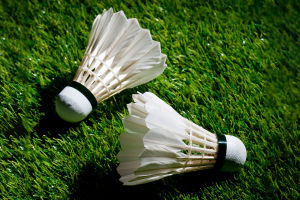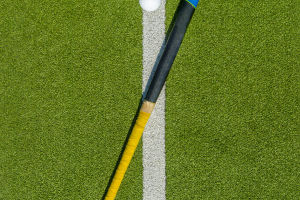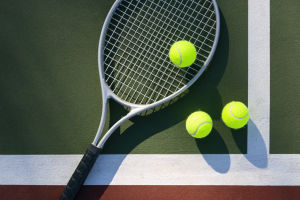Winning Tennis Strategies
Tennis is one of the ball sports. The effective tennis court is a rectangle, with a length of 23.77 meters, a width of 8.23 meters for singles, and a width of 10.97 meters for doubles.
There is a net in the middle, with each side of the court occupied by one of the opposing players, who hit the ball with tennis rackets.
As one of the most popular sports in the world, tennis is an excellent way to exercise, not only helping you burn extra calories but also providing immense enjoyment. It is a competition of skill and intelligence, requiring constant assessment and reflexes. Tennis matches can enhance one's control, and endurance, foster teamwork, and promote good character traits.
There are four ways to attack in tennis:
1. Hitting with topspin is more difficult than hitting flat
It may fly off if the topspin is insufficient, potentially resulting in an out. However, if executed accurately, a topspin shot leaving your racket at a certain speed will arrive at your opponent's racket faster than a flat shot, as the spinning ball loses less speed during flight. At the same net clearance height, you can hit a topspin shot with more force than a flat shot, making it more likely to push beyond your opponent's comfortable hitting zone.
2. It's easy to score points by approaching the net.
Once you start anticipating when your opponent will hit a softball, you'll be surprised to find frequent opportunities to approach the net and make volleys or put pressure. For example, whenever your opponent runs forward from the baseline to hit the ball, you can be sure they won't hit a powerful shot.
If you make them chase a lob, you should approach the net – it's a "no-brainer" in tennis. Even if they turn back to handle your powerful shot, you should still move forward. You'll either force them to hit a passing shot or, if they're smart enough, hit a lob.
By seizing the opportunity for pressure, you increase your chances of scoring. Passing up on opportunities to approach will allow them to hit safe, slow lobs over the net. They'll quickly return to position and hit again, whereas if you approach the net, they won't have the chance.
3. Hit the ball on the rise.
Don't wait to hit the ball when it's in your comfort zone as it descends from its highest point; instead, move forward and hit it as it's rising.
By hitting a few feet forward, you can achieve a sharper angle and find it easier to approach the net. More importantly, you give your opponent less time to react. If tennis players have enough time to handle the ball, even the most powerful shots are rendered ineffective.
Reducing your opponent's preparation time is as effective as hitting hard but with less risk as long as you control the timing and contact point of your shots. By reducing the opponent's opportunities to hit wide-angle shots faster, you also reduce your movement on the court.
4. Incorporate some serve and volley.
If you pay attention to professional tennis, you might notice that serve and volley isn't suitable for everyone. Even among the world's top players, only a small percentage excel at this technique.
Fortunately, your opponent is likely not a world-class returner. If you force your opponent to return high, slow balls, your serving advantage diminishes. Many players who can handle powerful serves consistently don't typically hit passing shots or lobs. If you make them try, they're likely to make mistakes.
Even if your volley technique is only average, you can handle their soft shots easily; you don't have to approach the net on every serve. Just the thought of you approaching the net may deter your opponent from using their usual soft return, resulting in mistakes when they try unfamiliar techniques.


